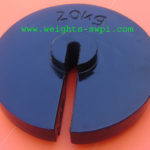A calibration certificate reports results at the time the calibration was performed. In many cases, the responsible person assumes that the calibration is valid for a year. This leads to the wrong conclusion that a calibration interval of one year is sufficient.
Ideally, calibration intervals are defined following a risk-based methodology, for example, what is the probability of something going wrong and how high is the impact? A high impact and high probability correspond to a high risk, which requires a shorter calibration interval. Otherwise, a low impact and a low probability result in a low risk, allowing intervals to be extended.

To forgo calibration is a high-risk strategy. Hidden costs and risks associated with the un-calibrated balance or scale could be much higher than the cost of calibration itself. Using non-calibrated equipment can lead to production problems such as
Unscheduled downtime
Inferior product quality
Process and audit issues
Product rework and recalls
Environmental changes can also lead to undetected drift or increasing random errors that degrade performance. Periodically scheduled calibration along with routine testing (see below) is the best way to reduce calibration-related risk.
To know more you can contact us: http://www.slotterweight.com/contact/

